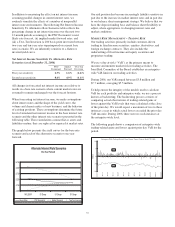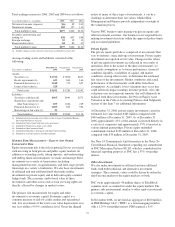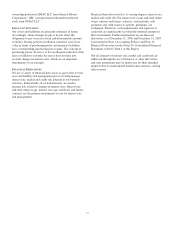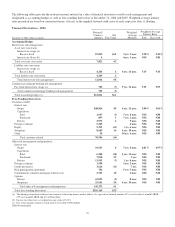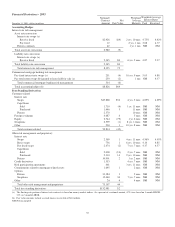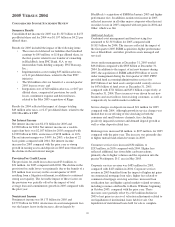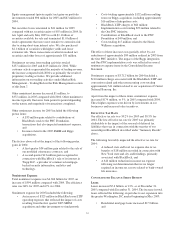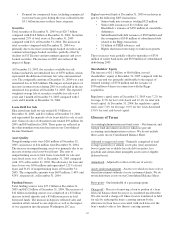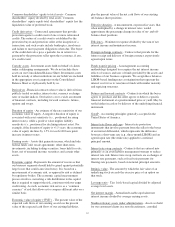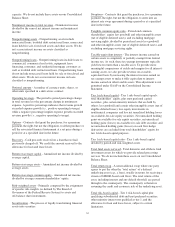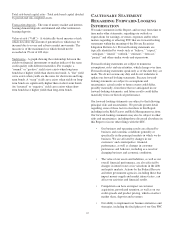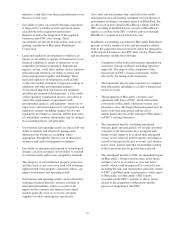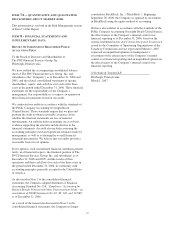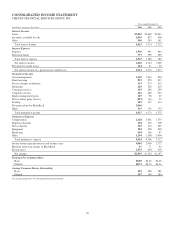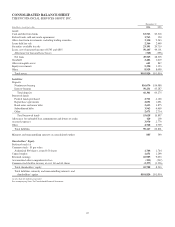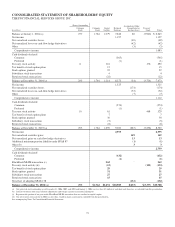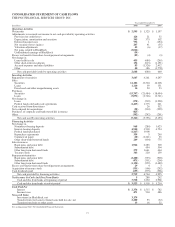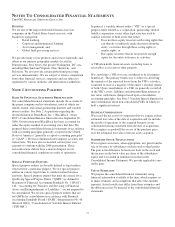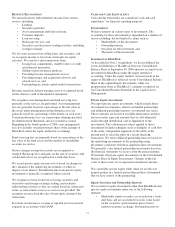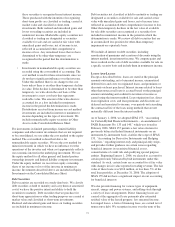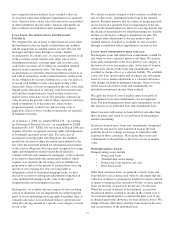PNC Bank 2006 Annual Report Download - page 75
Download and view the complete annual report
Please find page 75 of the 2006 PNC Bank annual report below. You can navigate through the pages in the report by either clicking on the pages listed below, or by using the keyword search tool below to find specific information within the annual report.
Total risk-based capital ratio - Total risk-based capital divided
by period-end risk-weighted assets.
Transaction deposits - The sum of money market and interest-
bearing demand deposits and demand and other noninterest-
bearing deposits.
Value-at-risk (“VaR”) - A statistically-based measure of risk
which describes the amount of potential loss which may be
incurred due to severe and adverse market movements. The
measure is of the maximum loss which should not be
exceeded on 99 out of 100 days.
Yield curve - A graph showing the relationship between the
yields on financial instruments or market indices of the same
credit quality with different maturities. For example, a
“normal” or “positive” yield curve exists when long-term
bonds have higher yields than short-term bonds. A “flat” yield
curve exists when yields are the same for short-term and long-
term bonds. A “steep” yield curve exists when yields on long-
term bonds are significantly higher than on short-term bonds.
An “inverted” or “negative” yield curve exists when short-
term bonds have higher yields than long-term bonds.
C
AUTIONARY
S
TATEMENT
R
EGARDING
F
ORWARD
-L
OOKING
I
NFORMATION
We make statements in this Report, and we may from time to
time make other statements, regarding our outlook or
expectations for earnings, revenues, expenses and/or other
matters regarding or affecting PNC that are forward-looking
statements within the meaning of the Private Securities
Litigation Reform Act. Forward-looking statements are
typically identified by words such as “believe,” “expect,”
“anticipate,” “intend,” “outlook,” “estimate,” “forecast,”
“project” and other similar words and expressions.
Forward-looking statements are subject to numerous
assumptions, risks and uncertainties, which change over time.
Forward-looking statements speak only as of the date they are
made. We do not assume any duty and do not undertake to
update our forward-looking statements. Because forward-
looking statements are subject to assumptions and
uncertainties, actual results or future events could differ,
possibly materially, from those that we anticipated in our
forward-looking statements, and future results could differ
materially from our historical performance.
Our forward-looking statements are subject to the following
principal risks and uncertainties. We provide greater detail
regarding some of these factors elsewhere in this Report,
including in the Risk Factors and Risk Management sections.
Our forward-looking statements may also be subject to other
risks and uncertainties, including those discussed elsewhere in
this Report or in our other filings with the SEC.
• Our business and operating results are affected by
business and economic conditions generally or
specifically in the principal markets in which we do
business. We are affected by changes in our
customers’ and counterparties’ financial
performance, as well as changes in customer
preferences and behavior, including as a result of
changing business and economic conditions.
• The value of our assets and liabilities, as well as our
overall financial performance, are also affected by
changes in interest rates or in valuations in the debt
and equity markets. Actions by the Federal Reserve
and other government agencies, including those that
impact money supply and market interest rates, can
affect our activities and financial results.
• Competition can have an impact on customer
acquisition, growth and retention, as well as on our
credit spreads and product pricing, which can affect
market share, deposits and revenues.
• Our ability to implement our business initiatives and
strategies, including the final phases of our One PNC
65


